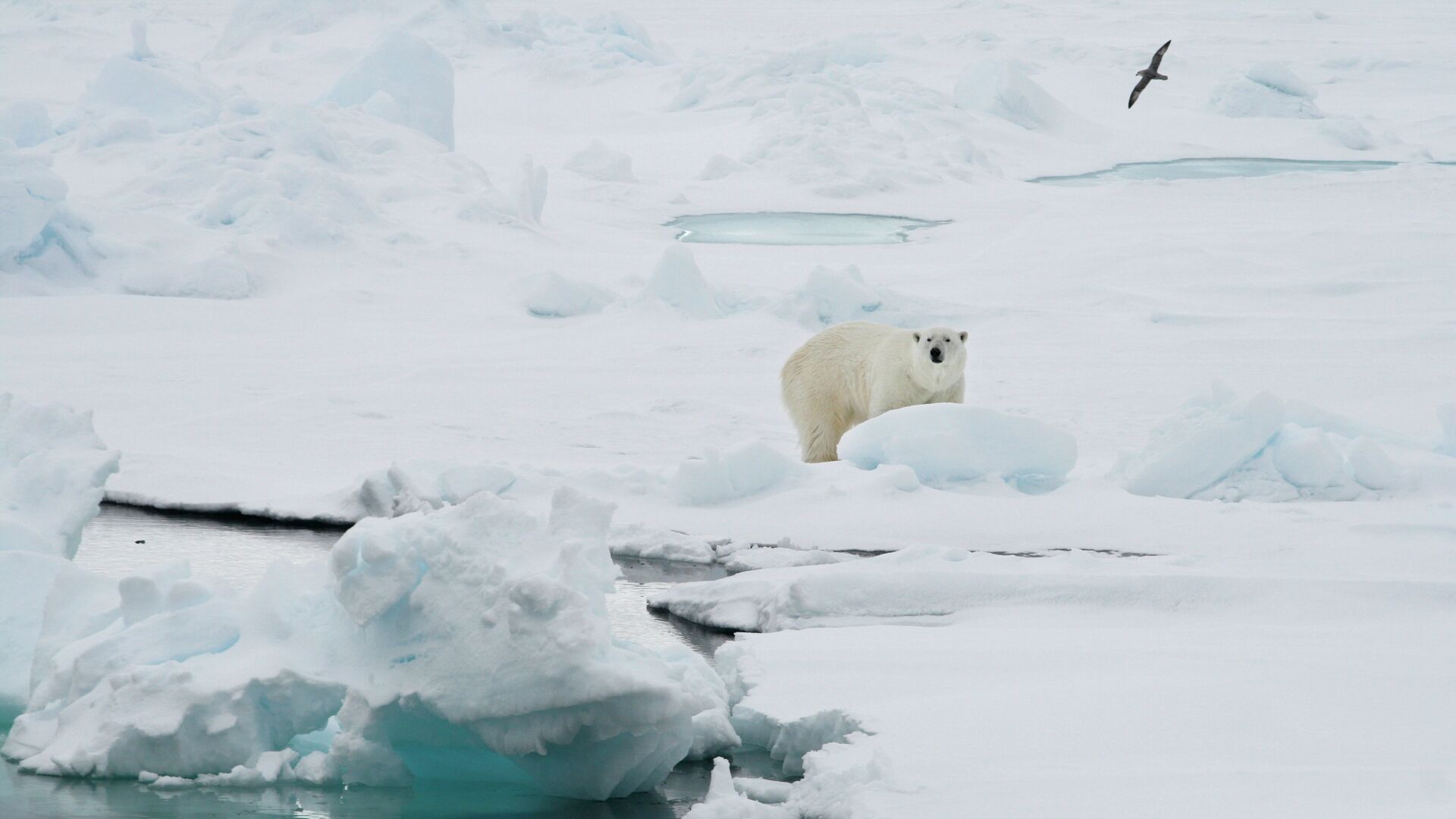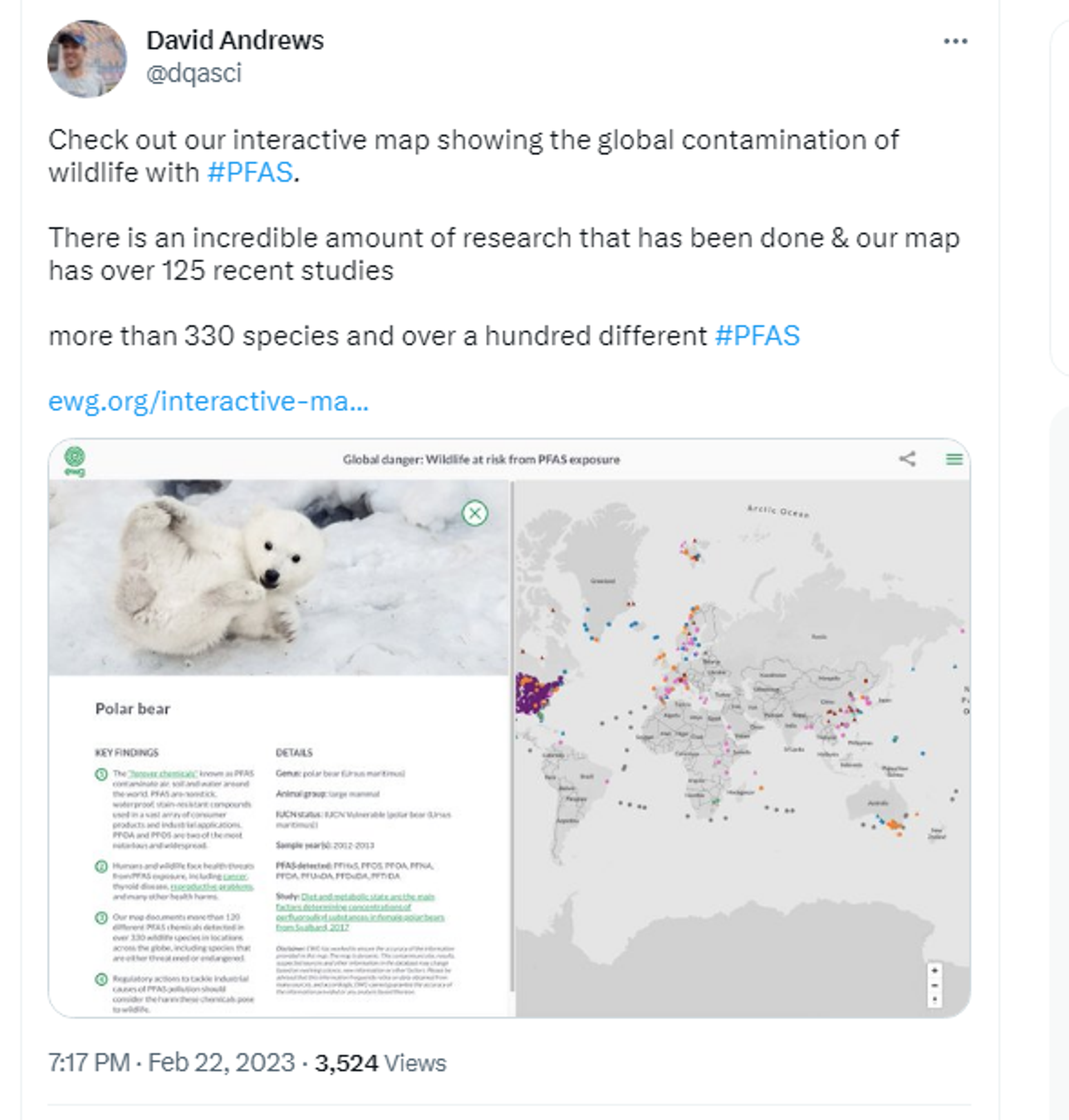https://sputnikglobe.com/20230223/animals-with-toxic-forever-chemicals-found-on-every-continent-but-antarctica-shocking-study-says-1107736061.html
Animals With Toxic 'Forever Chemicals' Found on Every Continent But Antarctica, Shocking Study Says
Animals With Toxic 'Forever Chemicals' Found on Every Continent But Antarctica, Shocking Study Says
Sputnik International
Animals with traces of toxic 'forever chemicals' have been identified on every continent but Antarctica, a study by EWG says.
2023-02-23T12:28+0000
2023-02-23T12:28+0000
2023-02-23T12:28+0000
science & tech
per- and polyfluorinated substances (pfas)
toxic chemicals
us environmental protection agency (epa)
food and drug administration (fda)
https://cdn1.img.sputnikglobe.com/img/102337/03/1023370394_0:0:3756:2114_1920x0_80_0_0_e2040b2c3eb813fd06d117b15ce8da1c.jpg
Over 330 species of animals on every single continent except Antarctica are contaminated with synthetic chemicals known as PFAS, an analysis released by a nonprofit advocacy group stated. Traces of what are also referred to as "forever chemicals" were identified in the blood of animals after an in-depth study of more than 100 recent peer-reviewed studies of PFAS contamination by the Environmental Working Group (EWG).The “sobering” findings offer a list of wildlife ranging from tiny ticks and plankton, to Siberian tigers, polar bears, wild boar, horses, dogs, and oysters - you name it. PFAS compounds earned the nickname “forever chemicals” due to their resistance to breaking down in nature or in the human body. Accordingly, they can accumulate over long periods of time, remaining permanently in the air, soil, water, and in the body. A plethora of studies has shown that this can lead to cancer and cause negative reproductive, developmental, cardiovascular, liver, and immunological effects. Extensive use of these chemicals in industrial manufacturing dates back to the 1940s, often to make products water-resistant.There has been ample US federal data showing that traces of the compounds can be identified in the blood of nearly all Americans, but until now, there has been limited research focusing on wildlife.The EWG analysis aggregated what previous studies had been carried out into the matter to assemble a map of their findings in animals around the world. About 120 kinds of PFAS were found, with some of the affected species already at risk of extinction, said senior scientist Tasha Stoiber of the EWG.In January, the EWG cited testing data from the Environmental Protection Agency and Food and Drug Administration as showing that consuming "a single meal of freshwater fish could lead to similar PFAS exposure as ingesting store-bought fish every day for a year." The EWG found that the median amount of PFAS in freshwater fish was 280 times greater than the forever chemicals detected in some commercially caught and sold fish, adding in its news release that such high levels of the compounds "may be harmful." The researchers involved in the latest study voiced hope that their findings would feed into the urgency of restricting PFAS pollution.“Human health and animal health are connected. What affects humans is going to affect animals as well, and vice versa. I think that’s another important takeaway overall,” Tasha Stoiber said.
https://sputnikglobe.com/20230117/eating-one-us-freshwater-fish-equals-month-of-drinking-forever-chemicals-water---study-1106439746.html
https://sputnikglobe.com/20220826/epa-to-designate-pfas-forever-chemicals-as-hazardous-substances-compel-companies-to-report-spills-1100045779.html
Sputnik International
feedback@sputniknews.com
+74956456601
MIA „Rossiya Segodnya“
2023
News
en_EN
Sputnik International
feedback@sputniknews.com
+74956456601
MIA „Rossiya Segodnya“
Sputnik International
feedback@sputniknews.com
+74956456601
MIA „Rossiya Segodnya“
animals, toxic chemicals, forever chemicals, on every continent except antarctica, resistance to breaking down in nature or in the human body, can accumulate for long periods,
animals, toxic chemicals, forever chemicals, on every continent except antarctica, resistance to breaking down in nature or in the human body, can accumulate for long periods,
Animals With Toxic 'Forever Chemicals' Found on Every Continent But Antarctica, Shocking Study Says
Eating freshwater fish caught in US lakes and rivers once a year amounts to a month of consuming drinking water containing "forever chemicals," a study by US nonprofit the Environmental Working Group (EWG) warned in January.
Over 330 species of animals on every single continent except Antarctica are contaminated with synthetic chemicals known as
PFAS, an
analysis released by a nonprofit advocacy group stated.
Traces of what are also referred to as "forever chemicals" were identified in the blood of animals after an in-depth study of more than 100 recent peer-reviewed studies of PFAS contamination by the Environmental Working Group (EWG).
"Likely anywhere you test for these compounds, you will find them. I think that was what is so shocking,” David Andrews, a senior scientist at the group who contributed to the report, was cited as saying.
The “sobering” findings offer a list of wildlife ranging from tiny ticks and plankton, to Siberian tigers, polar bears, wild boar, horses, dogs, and oysters - you name it.
"It has taken six decades of research on humans to really understand how these chemicals impact our biology in so many different ways … and there’s no reason to believe those same impacts are not also occurring in wildlife,” Andrews added.
PFAS compounds earned the nickname “forever chemicals” due to their resistance to breaking down in nature or in the human body. Accordingly, they can accumulate over long periods of time, remaining permanently in the air, soil, water, and in the body. A plethora of studies has shown that this
can lead to cancer and cause negative reproductive, developmental, cardiovascular, liver, and immunological effects. Extensive use of these chemicals in industrial manufacturing dates back to the 1940s, often to make products water-resistant.
There has been ample US federal data showing that traces of the compounds can be
identified in the blood of nearly all Americans, but until now, there has been limited research focusing on wildlife.
The EWG
analysis aggregated what previous studies had been carried out into the matter to assemble a
map of their findings in animals around the world. About 120 kinds of PFAS were found, with some of the affected species already at risk of extinction, said senior scientist Tasha Stoiber of the EWG.
In January, the EWG cited testing data from the Environmental Protection Agency and Food and Drug Administration as showing that consuming "a single meal of freshwater fish could lead to similar PFAS exposure as ingesting store-bought fish every day for a year."
The EWG found that the median amount of PFAS in freshwater fish was 280 times greater than the forever chemicals detected in some commercially caught and sold fish, adding in its news release that such high levels of the compounds "may be harmful."

17 January 2023, 21:23 GMT
The researchers involved in the latest study voiced hope that their findings would feed into the urgency of restricting PFAS pollution.
“Human health and animal health are connected. What affects humans is going to affect animals as well, and vice versa. I think that’s another important takeaway overall,” Tasha Stoiber said.

26 August 2022, 21:31 GMT





